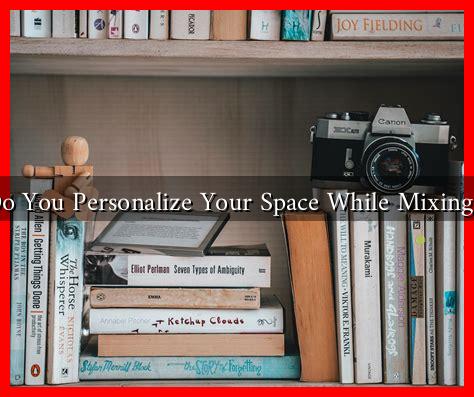-
Table of Contents
- How Do You Personalize Your Space While Mixing Styles?
- Understanding Design Styles
- Finding Your Personal Style
- Mixing Styles: Key Strategies
- 1. Choose a Dominant Style
- 2. Create a Color Palette
- 3. Balance Textures and Patterns
- 4. Incorporate Personal Items
- Case Studies: Successful Style Mixing
- Conclusion
How Do You Personalize Your Space While Mixing Styles?
Creating a personalized space that reflects your unique style can be a rewarding yet challenging endeavor. The art of mixing different design styles allows for creativity and individuality, but it requires a thoughtful approach to ensure harmony and coherence. In this article, we will explore effective strategies for personalizing your space while successfully blending various styles.
Understanding Design Styles
Before diving into the mixing process, it’s essential to understand the different design styles available. Here are some popular styles that you might consider:
- Modern: Characterized by clean lines, minimalism, and a neutral color palette.
- Bohemian: An eclectic mix of colors, patterns, and textures, often featuring vintage and handmade items.
- Industrial: Inspired by warehouses and factories, this style incorporates raw materials like metal and wood.
- Scandinavian: Focused on simplicity, functionality, and natural elements, often with a light color scheme.
- Traditional: Features classic details, rich colors, and a sense of history.
Understanding these styles will help you identify which elements resonate with you and how they can be combined effectively.
Finding Your Personal Style
Before mixing styles, it’s crucial to identify your personal aesthetic. Here are some steps to help you discover your style:
- Inspiration Boards: Create a mood board using platforms like Pinterest or physical cutouts from magazines. Focus on colors, textures, and furniture that appeal to you.
- Assess Your Space: Consider the architecture and layout of your home. Some styles may complement your space better than others.
- Experiment: Don’t be afraid to try different combinations. Use temporary decor items to test how they work together before making permanent changes.
Mixing Styles: Key Strategies
Once you have a grasp of your personal style, it’s time to mix different design elements. Here are some strategies to achieve a cohesive look:
1. Choose a Dominant Style
Select one style to serve as the foundation of your space. This will help anchor your design and provide a cohesive backdrop for other styles. For example, if you choose a modern style, you can incorporate bohemian elements through textiles and accessories.
2. Create a Color Palette
Establishing a color palette is crucial when mixing styles. Choose a few key colors that will be present throughout the space. This will create visual continuity. For instance, if your dominant style is industrial, you might choose a palette of grays, blacks, and warm wood tones, then add pops of color through bohemian textiles.
3. Balance Textures and Patterns
Mixing textures and patterns can add depth and interest to your space. Here are some tips:
- Layer Textures: Combine smooth surfaces with rough ones, such as a sleek leather sofa paired with a chunky knit throw.
- Mix Patterns: Use different patterns in a cohesive color palette. For example, pair striped cushions with floral prints in similar hues.
4. Incorporate Personal Items
Your space should tell your story. Incorporate personal items such as:
- Travel souvenirs
- Family heirlooms
- Artworks that resonate with you
These items not only add character but also create a sense of belonging in your space.
Case Studies: Successful Style Mixing
Many designers have successfully mixed styles to create stunning interiors. For example, the renowned designer Kelly Wearstler often blends modern and vintage elements, creating spaces that feel both timeless and contemporary. Her work demonstrates that mixing styles can lead to unique and personalized environments.
According to a survey by the American Society of Interior Designers, 70% of homeowners prefer a mix of styles in their homes, indicating a growing trend towards personalization in interior design.
Conclusion
Personalizing your space while mixing styles is an exciting journey that allows for creativity and self-expression. By understanding different design styles, identifying your personal aesthetic, and employing strategic mixing techniques, you can create a harmonious and inviting environment. Remember to choose a dominant style, establish a cohesive color palette, balance textures and patterns, and incorporate personal items to make your space truly yours. With these tips, you can transform your home into a reflection of your unique personality.
For more inspiration on mixing styles, check out House Beautiful.

